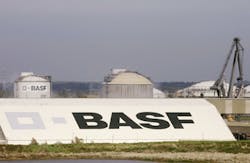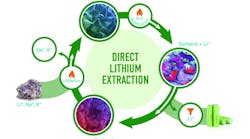Chemical producer BASF is evaluating an investment in a world-scale methane-to-propylene complex on the U.S. Gulf Coast.
The propylene thereby produced would supply the company’s existing North American operations, taking advantage of low gas prices coming out of U.S. shale fields. That would improve its cost position, the company said, and would be BASF’s largest single-plant investment to date.
The investment “would secure needed propylene supply for BASF downstream business as less propylene is available in the United States due to the shift from naphtha to ethane feedstocks,” noted Chuck Carr, senior director, global olefins, IHS Chemical. According to IHS Chemical Week, BASF plans to bring the plant on stream in 2019.
The evaluation is a wise move for BASF, Carr noted. It “offers BASF an opportunity to leverage abundant supplies of North American natural gas at low prices, turning that natural gas into high-value chemical products. Second, BASF’s downstream business is dependent upon an ever-shrinking U.S. supply of propylene for its operations — so it needs to secure supply.”
The reason for the shrinking supply is that the use of the abundant supplies of natural gas as a feedstock in North America comes at the expense of naphtha, which otherwise yields more propylene co-production as compared to ethane feeds.
Business basics
Propylene is used in production of higher-value chemicals and plastics used widely in daily life in developed countries. The BASF portfolio includes chemicals, plastics and performance products, leading to sales of about €74 billion and more than 112,000 employees in 2013.
BASF Corp., headquartered in Florham Park, New Jersey, is the North American affiliate of BASF SE, Ludwigshafen, Germany. BASF has nearly 17,000 employees in North America, and 2013 sales of $19.3 billion.
BASF is short of propylene in the U.S., Carr noted, and “this investment would help it forward-integrate [i.e., secure supply] for propylene derivatives, including oxo-alcohols, acrylic acid and propylene oxide. It uses many of these materials for the production of further downstream products.”
Propylene supply from steam crackers in the U.S. has been reduced by 40 percent due to the shift towards ethane feedstock into steam crackers, according to IHS Chemical.
“On-purpose propylene production projects are about the only avenue available in North America to secure new supplies and replace this lost production,” noted Carr. “In addition, refinery produced propylene is a byproduct of producing gasoline in fluid catalytic cracking units, and currently, refinery produced production of propylene is stagnant to declining in the U.S. as refiners shift production towards diesel and away from gasoline.”
Methanol involvment
What BASF actually is looking at is producing propylene from methane via methanol, i.e., methane-to-methanol-to-propylene.
BASF said that Investment details, including the capacity of the plant, investment amount and exact location are currently under evaluation. Yet If BASF were to decide to build this plant, IHS Chemical estimates that its size is likely to be around 500 ktons, similar to the size of propane dehydrogenation (PDH) units currently being built worldwide. Cost-wise, this type plant of this type is more expensive than a traditional PDH unit, but a methane feedstock has a much lower price per BTU than propane.
In terms of market supply, IHS Chemical doesn’t see it having significant impact on propylene supply balances. BASF says it will further strengthen its “backward integration” into propylene and grow its propylene-based downstream activities, leading to a stronger North American market position. The company already makes propylene in the U.S. at Port Arthur, Texas, in a joint-venture cracker project where BASF owns 60 percent interest and TOTAL the remaining 40 percent.


